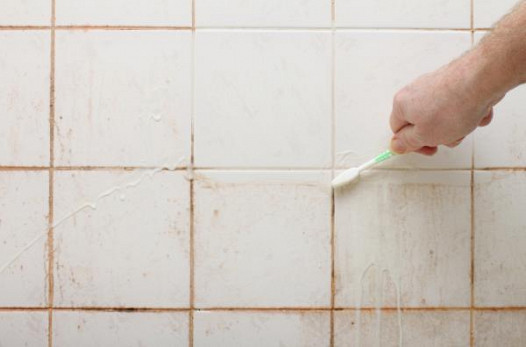Exactly how to Repair And Protect Against Bathroom Water Damage
Exactly how to Repair And Protect Against Bathroom Water Damage
Blog Article
Were you interested in information and facts about Common Causes of Water Damage in a Bathroom?

The restroom is incredibly vulnerable for wet build-up as well as potential water damages because of the regular use of water in it. This short article provides straightforward examination strategies to assist detecting water damages dangers.
The regular use water in the bathroom makes it exceptionally prone for moist accumulation and also possible water damage. By examining it regularly, you can lower water relevant damages.
The following collection of examinations is easy to execute as well as should be done when in every three months in order to maintain your restroom healthy as well as to prevent possible water damages brought on by the bathtub, the shower, pipeline joints as well as plumbing, sinks, cupboards, and the bathroom
Do not neglect doing these evaluations and also be comprehensive while executing them. Keep in mind that these easy inspections can save you a great deal of money by offering very early indicators for water damage
Bath tub and Shower
The shower and also bath tub need special interest and upkeep. Check the ceramic tiles and change if cracked. See to it that there is no missing cement between the ceramic tiles. Evaluate and also change split caulking at joints where the walls satisfy the floor or the tub. Obstructed drains and also pipes troubles will stop the bath tub from drying and also may suggest serious problems underneath the bathtub. Talk to a specialist right away to stop structural damages. Take notice of discolorations or soft locations around the bathtub walls as they might indicate an internal leak.
Plumbing
Signs for water damage are difficult to discover considering that most pipes are set up inside the wall surfaces.
Pay unique focus to floor covering and walls wetness as well as discolorations as they might show an invisible plumbing problem. Inspect wetness degrees in adjacent areas too.
Sinks and Cabinets
Sinks and cabinets are subjected to wetness as well as moisture everyday and also are usually overlooked. Inspect regularly under the sink and on the countertop above it. Repair any kind of drip in the catch as it might recommend drainpipe troubles. Check out the sink, slow draining pipelines might show an obstructed drainpipe. Change sink seals if they are fractured or loosened.
The Commode
The commode is a prone water joint. Inspect the water lines as well as search for leaks around the bathroom seat, in the hose pipe, and under the water tank. If you spot any kind of indicators of wetness on the floor around the bathroom, check for leaks in the toilet edge and also container seals.
Know that hanging bathroom bowl deodorants raises the opportunities for clogs.
10 TIPS TO PREVENT WATER DAMAGE IN THE BATHROOM
The average household uses approximately 80-100 gallons of water per person per day. For a family of 4, that's almost 2,500 gallons of water a week! The largest portion of this consumption comes from bathroom use. Flushing the toilet uses the most water, followed by taking a shower or bath. With that much water running through the home, water damage in the bathroom is bound to happen. Knowing how to spot signs of a water leak is essential to preventing long-term damage. This guide provides you with tips to reduce the impact of water damage on your bathroom.
CAUSES OF BATHROOM WATER DAMAGE
Pipe breaks are the most common cause of water damage we see in our daily jobs. The age of a pipe plays a large role in a pipe break as well as corrosion. Over time, the metal begins to break down, allowing water to escape. Frozen pipe breaks are also a concern in the winter months. Toilet overflows caused by paper products or children flushing inappropriate items. Degraded caulking around the toilet or bathtub can allow water seepage, sometimes behind the fixture, into the subfloor or walls. Condensation forms when the water in a pipe is cooler than the air temperature. Beads of water form on the exterior of the pipes, sometimes so much so that the water begins to drip and pool below. Sink or shower backups created by poor drainage. HOW TO PREVENT WATER DAMAGE IN YOUR BATHROOM
Inspect your toilet supply line for worn or frayed hoses and replace them as needed. Winterize your plumbing to prevent a frozen pipe break. Use vent fans to prevent condensation that can lead to mold growth. Routinely check and replace degraded caulking around your toilet or bathtub. Increase the temperature in your toilet tank and insulate your pipes during the warm summer months to keep condensation from forming. Use child safety locks on the toilets. Flush only toilet paper. "Flushable" wet wipes are actually not good for your plumbing system. Additionally, feminine hygiene products should not be flushed. Prevent water from escaping the tub or shower. Make sure shower curtains are in good condition. Inspect shower doors and replace the seal strip if necessary. Wipe up any water that accumulates on the floor and use bath mats. Water left to sit can cause damage to the tiles and flooring. Refrain from using bath products containing heavy oils to avoid a clogged drain.

I was made aware of that report on How to Fix a Water Damage Bathroom through someone on another domain. In case you appreciated our post plz be sure to share it. I enjoy reading our article about Common Causes of Water Damage in a Bathroom.
Click Here! Report this page